Pregnant women have a lot of questions about how their body will change during their pregnancy. The good news is that the physical changes happen very gradual (especially early on or in your first pregnancy) and you will probably start to notice changes in your body soon if you haven’t already.

This (or any article on The Pregnancy Nurse) should be taken as medical advice, this purely educational. Please talk with your provider about your specific needs and circumstances.
As a reminder, EVERY pregnant belly is different. If you have any concerns about yours please do see your provider about it, but just because your friends’ belly looks like something, doesn’t mean that yours will too! As someone who’s seen THOUSANDS of pregnant bellies, this is 100% true.
When does your belly start feeling hard during pregnancy?
Normally a few weeks into your second trimester — around 13-20 weeks pregnant most people start to notice it really feeling different (prior to that you may think it’s different, but there’s no real noticeable change).
During pregnancy, the uterus grows gradually as the baby develops inside. In the early stages the baby is still very small and the baby is still growing parts rather than getting much bigger. Most people start to feel their uterus growing, ad pants being tighter at around 15-20 weeks. However, how “hard” it feels is based on your interpretation of what “hard” is and also the placement of fat, muscles and skin above the baby.
This hormonal and physiological process usually causes a few changes in the abdomen wall. The muscles and ligaments of the uterus stretch to accommodate the growing baby, which can cause a feeling of firmness or mild cramps.
Most women start feeling their whole belly feeling hard during the second or third trimester, starting around the 20th week of pregnancy. However, during the third trimester, the belly will get even harder because the uterus will be larger and will expand significantly. Overall, the feeling of hardness in the abdomen during pregnancy is a normal part of the process, just as the pregnancy progresses, the belly grows with the baby inside.
And, remember that every pregnant person’s feeling as to how “hard” their belly feels differs person to person. Also, we’re going to talk about how that could be a contraction (especially if you feel it tighten) that you need to watch for, so keep reading!
I will say that your belly pooching out is not normally one of the early signs of pregnancy, and some pregnant women get frustrated by that (they want to see the changes with their own eyes to make it all more tangible).
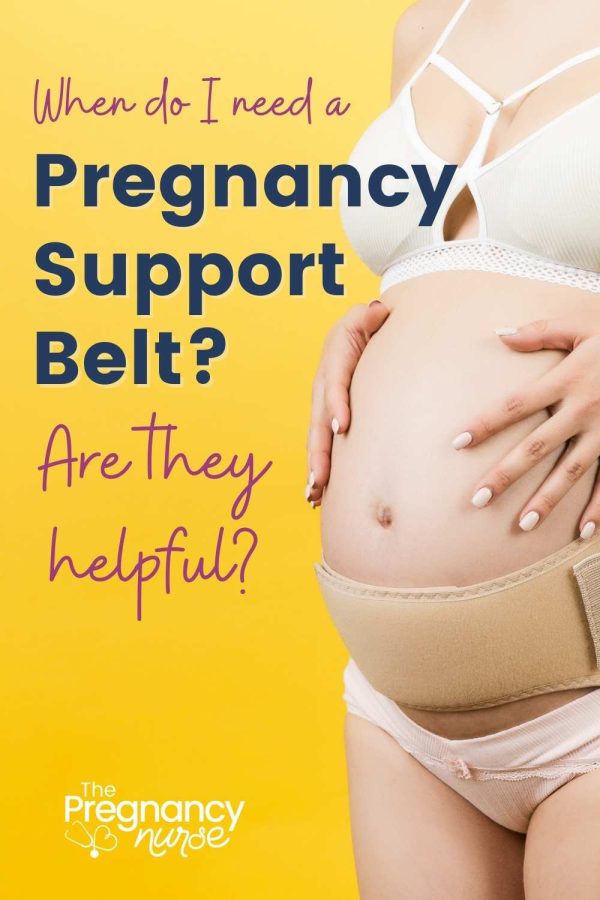
How does a pregnant belly feel in early pregnancy?
In early pregnancy, the pregnant belly may not feel noticeably different. During the first trimester, the uterus is still within the pelvis and hasn’t yet grown large enough to cause a significant change in the shape or size of the belly. However, hormonal changes in the body may cause pregnancy symptoms from pregnancy hormones like constipation, or morning sickness which can lead to bloating and discomfort in the abdomen.
As the pregnancy progresses, towards the end of the first trimester, the uterus will start to grow upward and outward, causing the belly to take on a rounded appearance. By the start of the second trimester, the belly may begin to feel firmer and look more noticeably pregnant (and pants may stop fitting). Every woman’s experience of pregnancy is unique, so some may start to feel a change earlier or later than others.
People who have previously been pregnant beyond this point may feel their belly poking out earlier or getting harder earlier.
It’s important to make sure that you’re eating right during pregnancy — so grab my healthy eating guide:
How does the belly expand during pregnancy?
During pregnancy, the belly gradually expands as the baby grows. The uterus, which is a small organ before pregnancy, expands to accommodate the growing fetus. As the uterus grows, it pushes the intestines and other organs upward and outward, causing the belly to expand.
The pelvis also expands to make room for the baby, making the belly protrude even more. In the third trimester of pregnancy, the belly expands even more rapidly up beyond the belly button.
As the baby gains weight, and the baby’s movements become more noticeable. Your pregnancy belly may also become itchy or develop stretch marks as the skin stretches to accommodate the growing baby. You may experience stretching of your round ligaments that are a very painful sharp pain.
Note: If your whole body feels itchy, especially the palms of your hands and soles of your feet please do let your provider know ASAP. It could be a problem sign (but an itchy belly alone isn’t unusual).
Overall, the expansion of the belly during pregnancy is a gradual but inevitable process that is essential for the health and development of the growing baby. At this stage of pregnancy you need to allow that belly do what it wants, and it’s not a time to wear a girdle to “suck it in”.
Pro Tip: As your belly grows, you may also get a dark line that moves up the center of your abdomen. This is called the Linea Nigra an dis due to the increased blood flow to the baby. All very normal.
I also have a full post on belly button pain that you might find interesting.
Will my pregnant belly grow every week?
In the beginning the growth of your belly will be very small comparing week to week, but as you get bigger as you measure the top of your pelvis (or your pubic bone) to the top of your uterus (called the fundus) will increase by about 1 cm/week. Your care provider may measure it at each of your appointments to make sure baby is growing well.
This expansion will cause your belly to become more rounded and visibly larger. However, the amount and rate of growth can vary from woman to woman and pregnancy to pregnancy. As your baby continues to grow and gain weight, your belly will also continue to stretch and expand.
It’s important to remember that every woman’s body is different and there is no “right” size or shape for a pregnant belly. There are many ways in which a belly can expand and look, so don’t be worried that yours doesn’t look like someone else’s. It doesn’t mean anything about your pregnancy or the growth of your baby.
Pro Tip: If you get a lump near your umbilical cord, or have belly button pain it is possible that you have an umbilical hernia. They aren’t unusual. Be sure to talk with your provider about it at your next appointment (and if it’s really painful be seen sooner).
What affects pregnant belly size?
The size of a pregnant belly can be affected by a variety of factors.
Firstly, the amount of amniotic fluid surrounding the fetus can play a role in how large the belly appears.
Additionally, the size of the fetus itself can impact the size of the belly. Women who are carrying multiple fetuses, or a larger than average fetus, may have a larger belly.
If it’s your second baby (vs your first time) your belly may poke out earlier, and that’s totally normal as those muscles have already done this once before.
A woman’s pre-pregnancy weight can also influence belly size. Where women had belly fat along their core will remain during pregnancy, and will affect how the belly shapes.
The amount of space in a women’s abdomen may change how they “show”. Taller women with a long torso often have more room for the baby to grow, vs a woman with a more petite torso will poke out more because there isn’t as much space in their abdomen.
Lastly, baby’s position in the womb can affect how the belly looks. If the baby is still “high” (not engaged into the pelvis yet) you will carry higher. If the baby is breech your belly can have a different look as well.
Ultimately, while there are a variety of different factors that can influence the size of a pregnant belly, it’s important to remember that every woman’s pregnancy is unique, and there is no one “right” way for a belly to look.
Pro Tip: I’d love to hang out with you during your pregnancy and send you info tailored just to you:
What does pregnant belly expansion feel like?
Pregnant belly expansion is not always a comfortable experience, as the uterus stretches and the ligaments supporting it grow and weaken. Many women describe feeling round ligament pain, which can be sharp or stabbing, in their lower abdomen or groin. You may also have small cramps or contractions as the uterus streches.
As the skin stretches, some women may also develop stretch marks, which can be red, purple, or white in color, and it may be itchy as it grows, which we already discussed.
When will your baby bump disappear after delivery?
After delivery, you may be eager to see the return of your pre-pregnancy body, including the disappearance of your baby bump. However, the timeline for this varies for each individual. The baby bump is the visible result of the growing uterus during pregnancy.
After childbirth, the uterus begins a process called involution, where it contracts and returns to its pre-pregnancy size. This process can take several weeks to months, depending on individual factors such as breastfeeding, weight loss, and overall health. Additionally, any excess skin or stretched muscles may take longer to fully recover. While it can take some time for the baby bump to disappear, focusing on a healthy postpartum lifestyle can help speed up the process and lead to a happier, more confident you.
Most often, right after delivery your “bump” looks like it did at about 5 months pregnant. Your uterus will slowly shrink back down to it’s pre-pregnancy size during your postpartum period. Any weight or body changes that happened during pregnancy may take longer to adjust after baby is born.
Some people believe the “pooch” left after a baby is your uterus, but that is not true. It does shrink back below your pubic bone (unless you have an issue like growths or fibroids).
If you’re looking for more tips on what your body, your baby and your life will look like after delivery I recommend this. Come join me!
While we’re talking about pregnant bellies, I wanted to talk about a common condition some of you may end-up having at some point. Diastasis Recti….
What is Diastasis Recti?
Diastasis Recti, also known as abdominal separation, is a condition that occurs when the two halves of the rectus abdominis muscle, commonly known as the “six-pack,” separate or are pushed apart. This can happen due to pregnancy, obesity, or excessive abdominal exercises that put too much pressure on the muscles.
How do I know I have diastasis recti?
A visible bulge or gap in the midline of the abdomen is the most noticeable symptom of diastasis recti. Other symptoms may include lower back pain, constipation, or difficulty maintaining good posture. A healthcare provider can diagnose diastasis recti with a physical exam, checking for the distance between the rectus abdominis muscles and the quality of the connective tissue. Treatment options for this condition include exercises to strengthen the abdominal muscles and surgery in severe cases.
This video has some good information on it:
When is a pregnant belly most likely to start showing?
A pregnant belly is most likely to start showing during the second trimester, which occurs between 13 and 27 weeks of pregnancy. Most women start to notice a visible bump around 20 weeks, which is when the uterus begins to grow and expand beyond the pelvic region.
During the second trimester, the fetus also undergoes significant growth and development, which can contribute to the noticeable changes in the mother’s abdomen.
However, every pregnancy is unique, and some women may show earlier or later depending on factors such as body type, weight, and previous pregnancies. It is important to remember that the rate and timing of belly growth can vary widely amongst women, and there is no “right” or “wrong” way for a pregnant belly to look or develop.
What should I do if I want to hide my pregnancy?
While it’s normal to maybe not want to share yet wanting to hide your pregnancy for a long period of time is going to be difficult. Baggy sweaters, and large tops can hide it for a while, but it will likely start to become very noticeable. You want to think about how you will tell or announce your pregnancy soon so you don’t feel uncomfortable about your protruding belly.
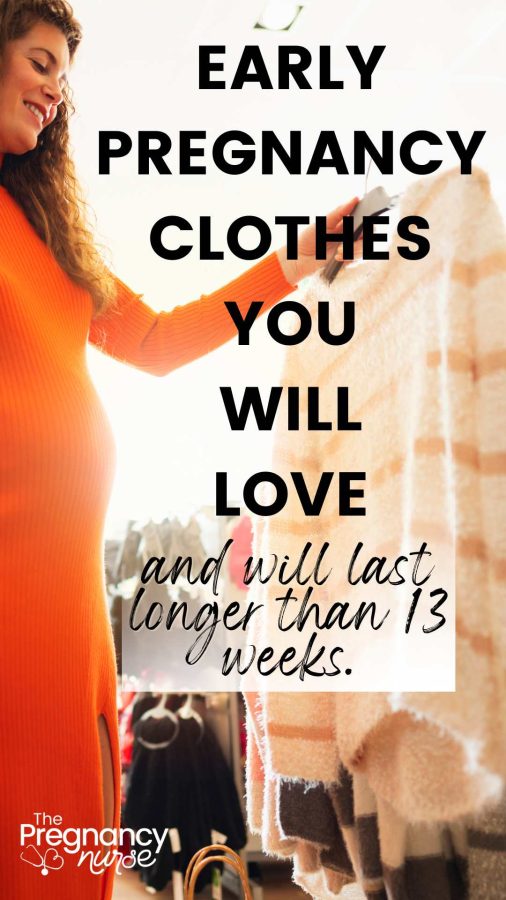
Hard Belly vs Contractions
Before we finish up I want to be clear at the difference between your belly feeling full or firm vs “hard”.
Contractions of your uterus will make it feel hard. Like, really hard (like feeling your forehead under your skin). You may or may not have cramping associated with it. These are normally called Braxton-Hicks contractions (also practice contractions or false labor) and it is not unusual to have them now and then throughout your pregnancy as the uterus grows and expands.
I have a whole post on what it means if your belly is hard in your third trimester.
However, if you’re finding that your uterus feels hard, and the relaxes, and then feels hard again a few minutes later (like in fairly regular intervals) it is a good idea to call a doctor to make sure everything’s OK. They could be actually labor contractions that are opening your cervix and you will need to stop those if you’re still too early before your due date.
Also, I always felt like my uterus felt “hard” when I was standing up, but if I would lay down on my left side and pull my knees up (like in the fetal position) it would soften up — it was mostly my abs keeping it “hard” as I stood.
If you have ANY questions about your uterus feeling tight or hard please do talk with your health care provider. If it is hardening and coming with other things like cramping, changes in discharge, vaginal bleeding or pelvic fullness please call them asap as it could be preterm labor.
So, that’s just a bit about your belly during this whole process we call pregnancy. If you like easy to understand pregnancy information like this, come join me in The Online Prenatal Class for Couples where we get you prepared for birth in just a few hours!
The Online Prenatal Class for Couples is the simple way to get prepared for your baby’s birth. It can be done in just a few hours and couples absolutely love it.
I love what Lauren said about the class:
“The course is fantastic! Covers a lot of topics around prenatal and baby that sparked conversations. It also was a great way to make my hubby feel involved from the couple questions and helped him see what more his role could entail.”
Check-out the Online Prenatal Class Reviews here!
And, if you’re not quite sure you’re ready for that whole thing, check out my free prenatal class. It’s your first step toward getting in the driver’s seat of your birth.


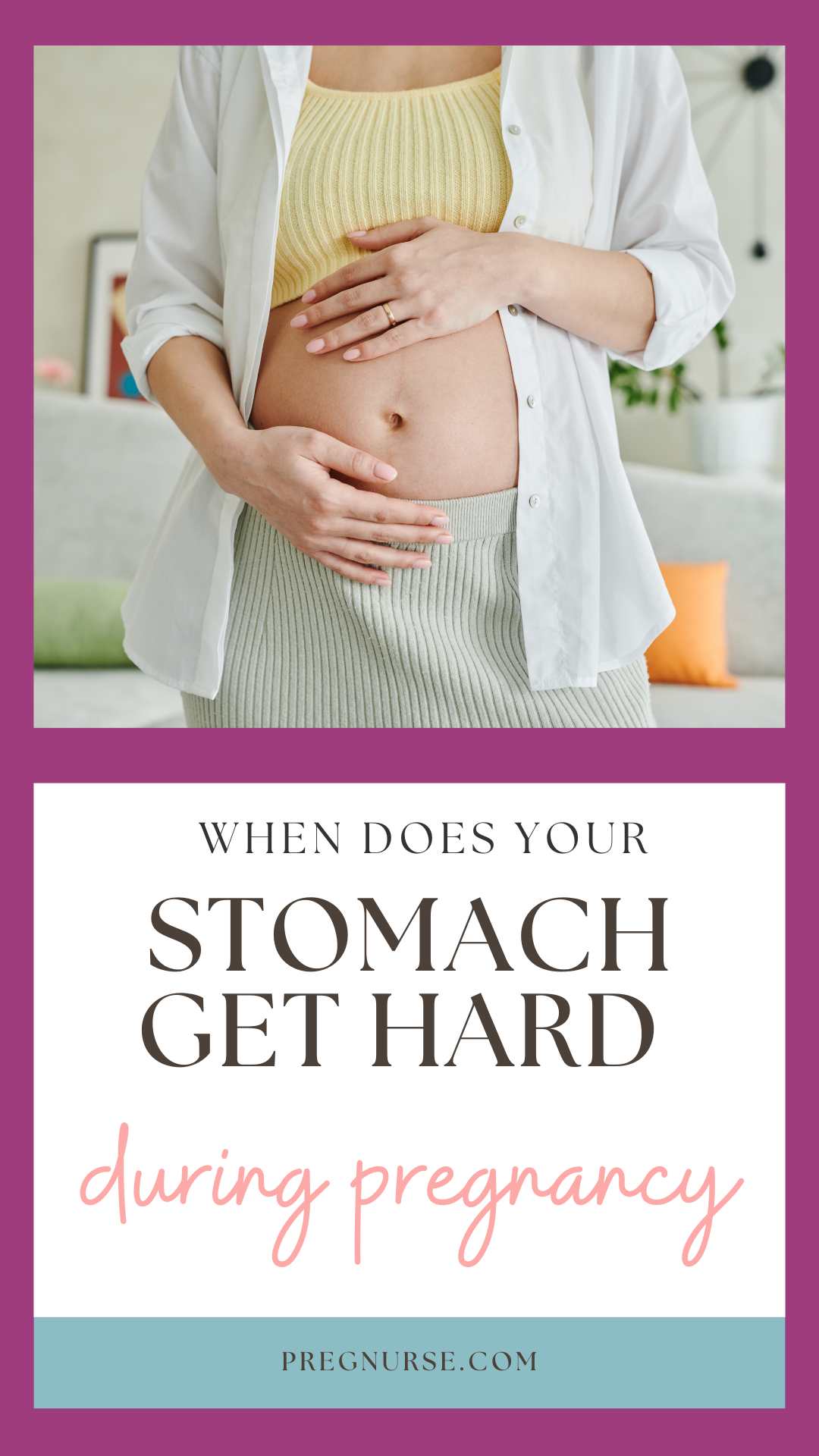

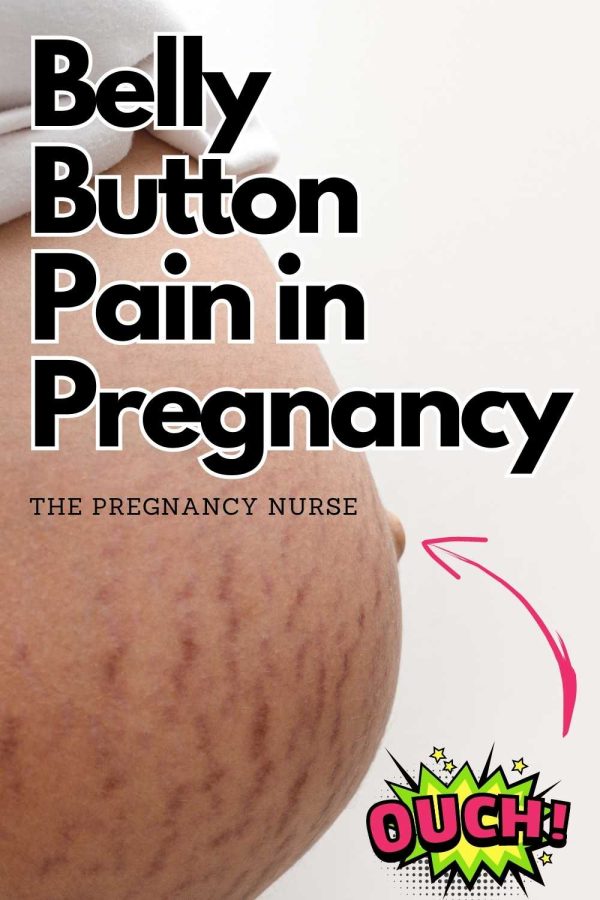

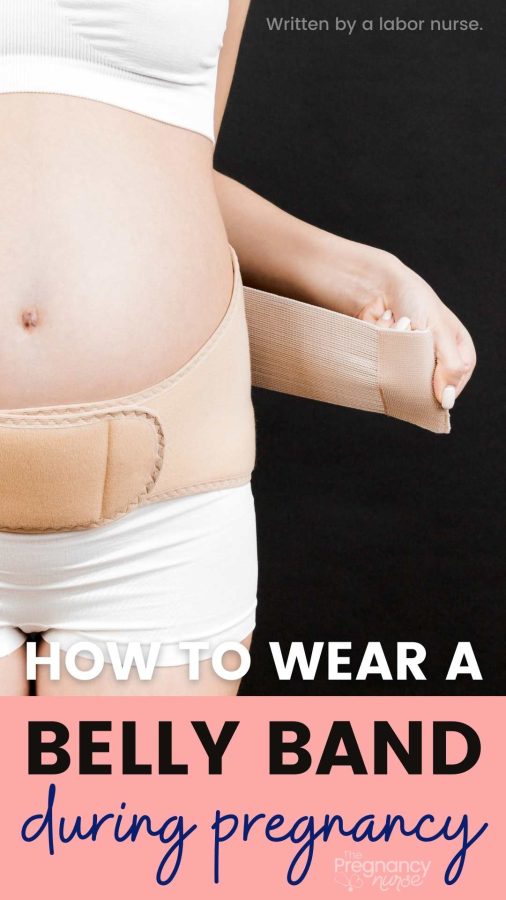



 Kidney Stone vs Childbirth Pain — Which is Worse?
Kidney Stone vs Childbirth Pain — Which is Worse?
